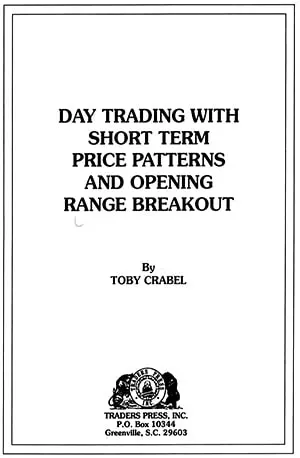PDF Preview:
| PDF Title : | Day Trading with Short Term Price Patterns and Opening Range Breakout |
|---|---|
| Total Page : | 299 Pages |
| Author: | Toby Crabel |
| PDF Size : | 5.7 MB |
| Language : | English |
| Rights : | crabel.com |
| PDF Link : | Available |
Summary
Here on this page, we have provided the latest download link for Day Trading with Short Term Price Patterns and Opening Range Breakout PDF. Please feel free to download it on your computer/mobile. For further reference, you can go to crabel.com
Day Trading with Short Term Price Patterns and Opening Range Breakout – Book
The present research report deals with the market concept “gap”. A gap, as defined in this report, is an opening above or below the previous day’s close by the indicated amount. Traditionally, the gap has been defined in narrower terms, as an open outside of the previous day’s range. Gaps, if held throughout the day, indicate high momentum in the direction of the gap and suggest that the trend will continue over the next several days.
The directional indication is dependent on this gap’s holding into the close. Ideally, there will be some follow-through during the session in the gap’s direction. As will be seen in the following tests it is very difficult for the market to follow through after a gap and it appears as the exception rather than the rule. Tables of the results of various size opening gaps and of opening range breakout trades (ORB) taken after the gap are provided for eight markets. The Tables indicate the size of the gap followed by the amount above or below the open a trade was taken.
Thereafter it is indicated whether the trade-off the open was profitable as a buy or sale (B or SS), what percentage profitability occurred, the number of trades in each case, the average dollar amount of winning trades, and the average dollar amount of losing trades, followed by gross profit, not including slippage and commission. The tests serve as the working material for determining the nature of each market.
It should be noted that no stops were used in the tests, consequently, a move above and below the open could have occurred on the same day. If this happened I counted both trades; obviously one had to be a loser. It has been my observation that the further the market moves in one direction off the open the less likely for it to move to the other side of the open.

